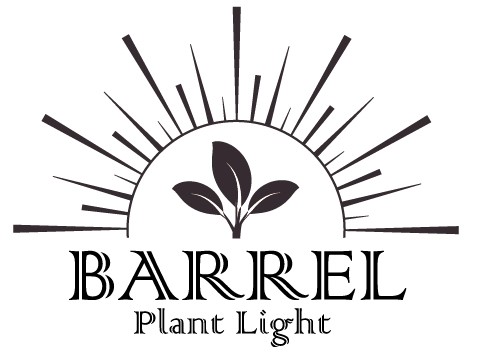It is possible to cultivate beautifully tight agaves indoors.
How do you use grow lights at Bear Root?
Root management at Bear Root can be done with just the sunlight from the window without using grow lights. However, using grow lights can relatively restrain the opening of the leaves right after rooting, which provides a good start and positively affects the subsequent growth shape and development.
Furthermore, while direct sunlight and strong light were essential for cultivating well-formed agaves in the past, using effective grow lights like Amaterasu has made it possible to cultivate beautifully tight agaves indoors, which was difficult before.
Do you use different grow lights depending on the size of the plant?
For young plants, especially to promote growth, I water them more frequently. Also, when doing practices like sub-irrigation until rooting and establishment, I feel it is necessary to provide both air circulation and adequate light. If grow lights are not used, the plants often grow somewhat sparsely and tend to etiolate.
For medium and large plants, the basic approach is the same, but to cultivate tight plants indoors, it is easier to maintain a spherical or compact shape by placing the lights closer and simultaneously applying strong wind.
Amaterasu illumination, safer and more reliable than sunlight
Are there any differences in growth between using grow lights and sunlight when cultivating agaves?
Except during the peak of summer under intense sunlight, if cultivated at a consistent irradiation distance, using multiple units can provide effects and growth comparable to natural sunlight.
Especially after November, when the temperature starts to drop and you still want to continue growing certain plants, or when using it indoors at around 25 degrees Celsius for root management, the effect is tremendous, making it possible to cultivate during the winter period as well.
How are Amaterasu and Tsukuyomi used in the cultivation of caudex plants (succulents with thick trunks)?
Root management of Bear Root plants is generally conducted in an indoor glass greenhouse (above 30 degrees Celsius) except during periods when the temperature exceeds 30 degrees in midsummer.
By using grow lights while managing heating and air circulation within the greenhouse, development can be safely and effectively promoted.
Especially in the case of unrooted plants, exposing them too much to sunlight can cause them to become dehydrated and shrivel, as they are not yet able to absorb water. There is also a risk of scorching before they acclimatize, which can lead to the worst case of them dying off. Therefore, using lights like Amaterasu for root management is safer and more successful.
How do you adapt the use of grow lights depending on the plant variety?
For plants like Gracilis and all varieties of Pachypodium, if they are placed in spots where sunlight does not reach evenly or in less ideal conditions such as east-facing locations, the branches tend to grow excessively towards the south or west. Therefore, when managed outdoors, ideal conditions that are sought after include south-facing locations or places that receive afternoon sun from the west.
In that regard, when cultivating with Amaterasu lights, if they are used in multiple units at appropriate distances, it becomes possible to manage rooting safely without etiolation or leaf scorch, while hedging risks.
For Pachypus, if they successfully root from an unrooted state under greenhouse irradiation and enter the growth stage, transitioning to outdoor management is challenging until they acclimate. Particularly, new branches are highly susceptible to dying off due to being overpowered by direct sunlight.
In that regard, using Amaterasu allows for the safe and clean cultivation of new branches and leaves within the greenhouse until they are well settled.
Instead of using just one light directly above, using two or three lights to illuminate from all directions allows branches to grow evenly in their natural directions. It can be said that managing newly rooted Pachypus leaves with grow lights is the best approach, as they are prone to scorching easily.
Additionally, during the four months from December, when plants are moved indoors, to March, when they are managed outdoors, it is possible to expose them to a quality of light closer to sunlight for many hours while suppressing etiolation and simultaneously cultivating them indoors. This allows the plants to look more attractive and can be enjoyed without getting tired of them.
Are there differences between using grow lights and sunlight in the cultivation of caudex plants?
From the perspectives of safety, efficiency in root management, and prevention of etiolation, grow lights are sufficient.
While caudex plants can be cultivated indoors alone, summer-type caudex plants, in particular, often experience slow startups after dormancy and difficulty in flowering if they are not exposed to sunlight for a certain period to charge their energy.
By combining sunlight and grow lights (including during the winter period) throughout the year, I believe you can cultivate healthy and beautiful caudex plants.
What does plant cultivation mean to you?
I have spent most of my life on it, so it is no longer just a hobby but has become a part of my life and routine.
It is an endless exploration and healing.












